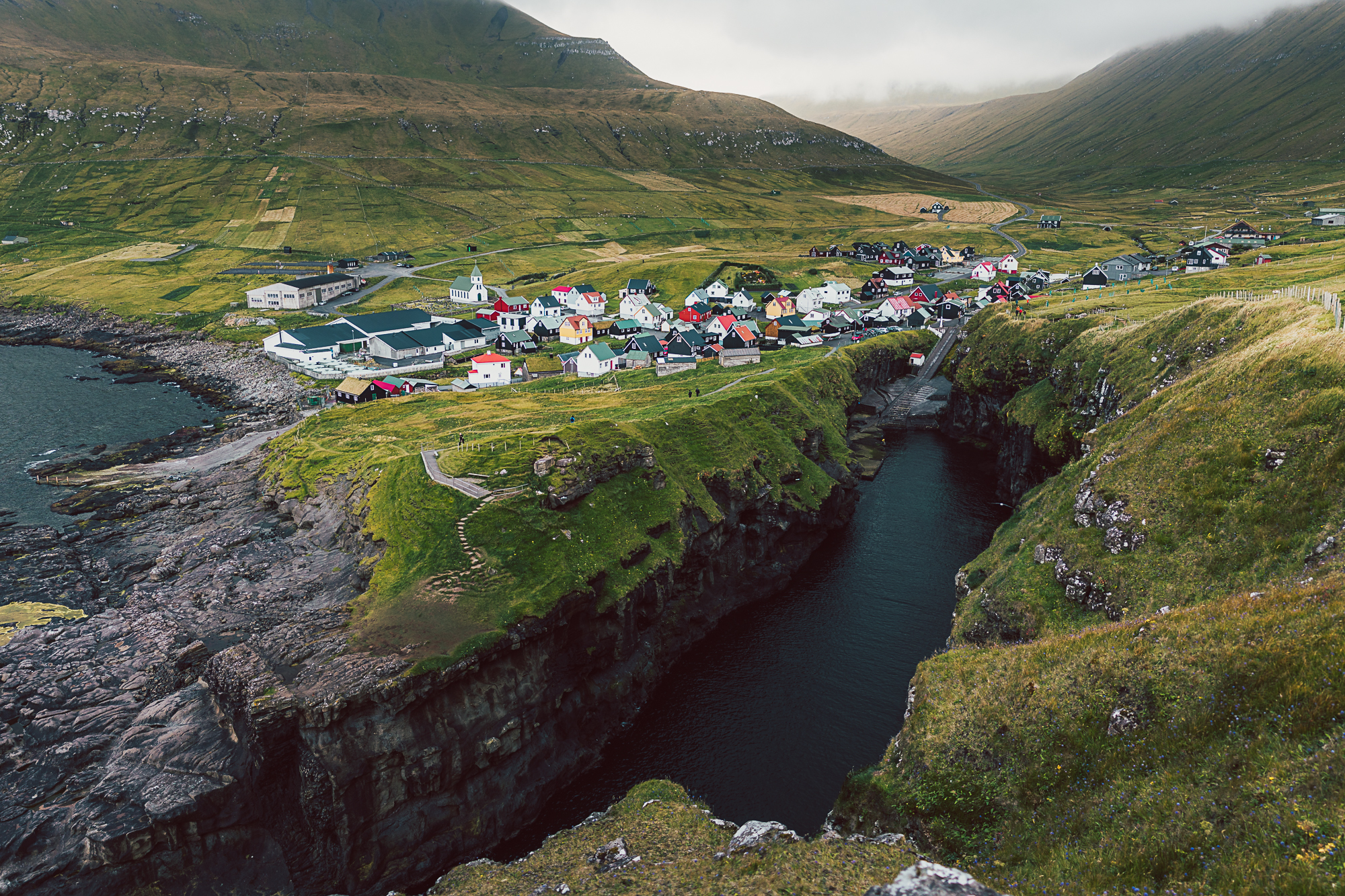Photography by Richard Giordano
If it’s quiet contemplation that you seek, the small Faroese coastal village of Gjógv might be exactly what you’re looking for. Ridiculously picturesque and boasting one hotel, restaurant, and coffee shop, Gjógv is a place to slow down, read a book, and enjoy the contented stillness of this hillside town. But to truly relax, you first must drive the narrow, one-way road that descends into the village (keeping fingers crossed for minimal to no fog). In town, bright green grass and moss cover the hillsides, as does a healthy sheep population. Seabirds perch on the high rocks, and a waterfall pours from the nearby cliffside; this spectacle can only be seen by embarking on a two-hour-long hike.
With fewer than 100 houses and 50 residents, Gjógv’s charm lies in the red, yellow, and black buildings, grass roofs, soaring emerald and black volcanic hillsides, and the 200-meter sea-filled gorge from which the town received its name. Established before the 1500s, the settlement began as a fishing village as the harbor provided a protective haven for sailors. Today, a school still stands from the 1800s, and a prominent church built in 1929 offered the first services in Faroese.

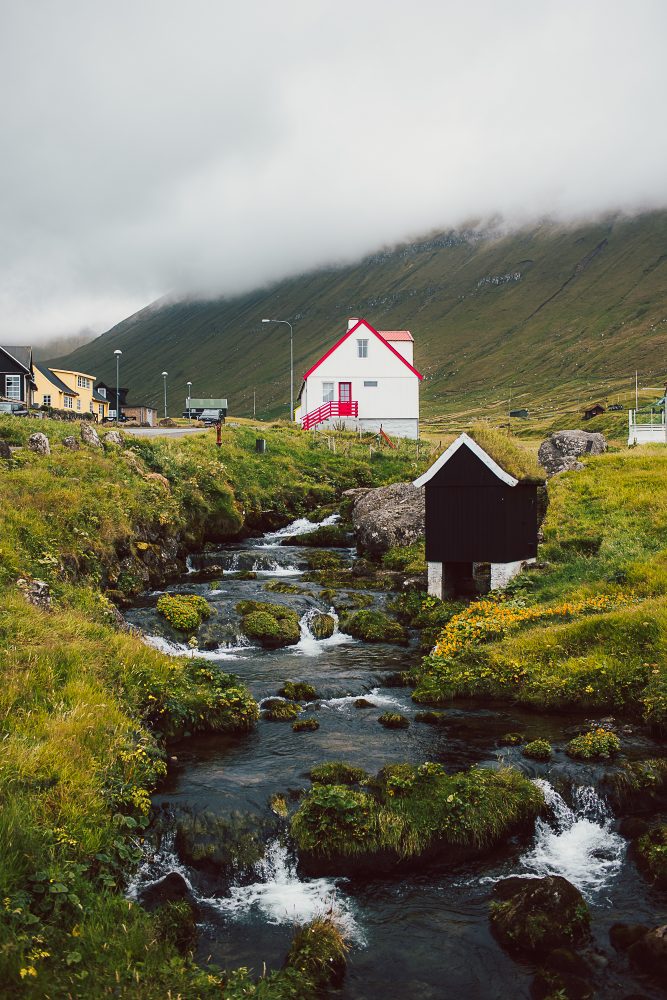

Where to Camp
As wild camping is not permitted on the Faroe Islands, head to Camping by Gjógv, which features a gravel parking lot elevated by a truly spectacular ocean view. It is one of the best on the island: simple with stunning views. Open for camping from May 1 to September 1; the campsite has a capacity for 20 caravans and 10 tents. Facilities include toilets, a shower, a washing machine and dryer, Wi-Fi, and a dump station for touring RVs. The rate per night is approximately 35 USD at the time of writing.
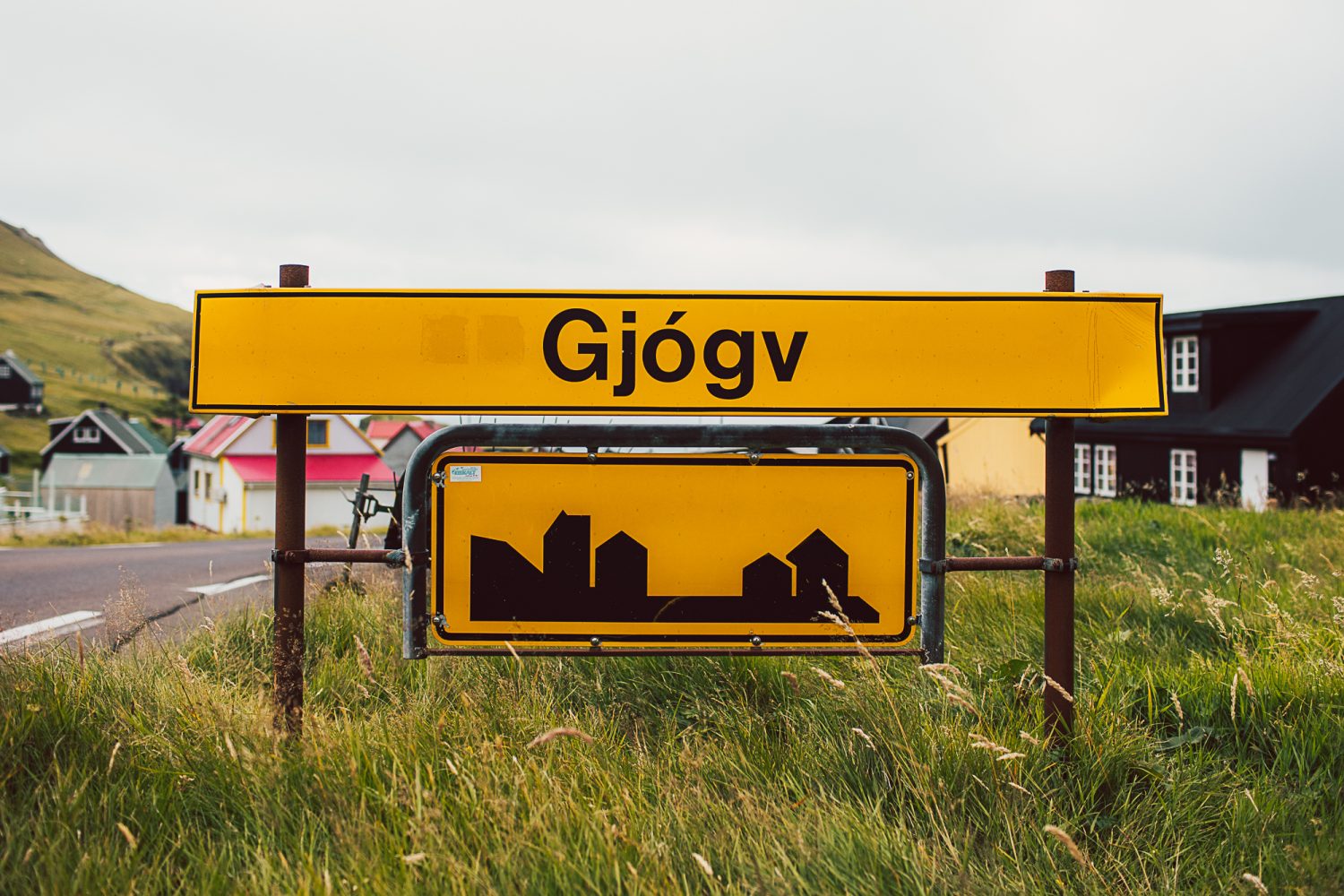
What to Do
A 6.4-kilometer loop trail takes hikers up 436 meters, where the views extend for days, and the possibility of seeing puffins is real. There is a set of stairs, which will take you halfway up, but the ultimate reward is mingling with the local sheep and appreciating the cliffside waterfall across the bay. To find the track, head to the north side of the natural harbor.

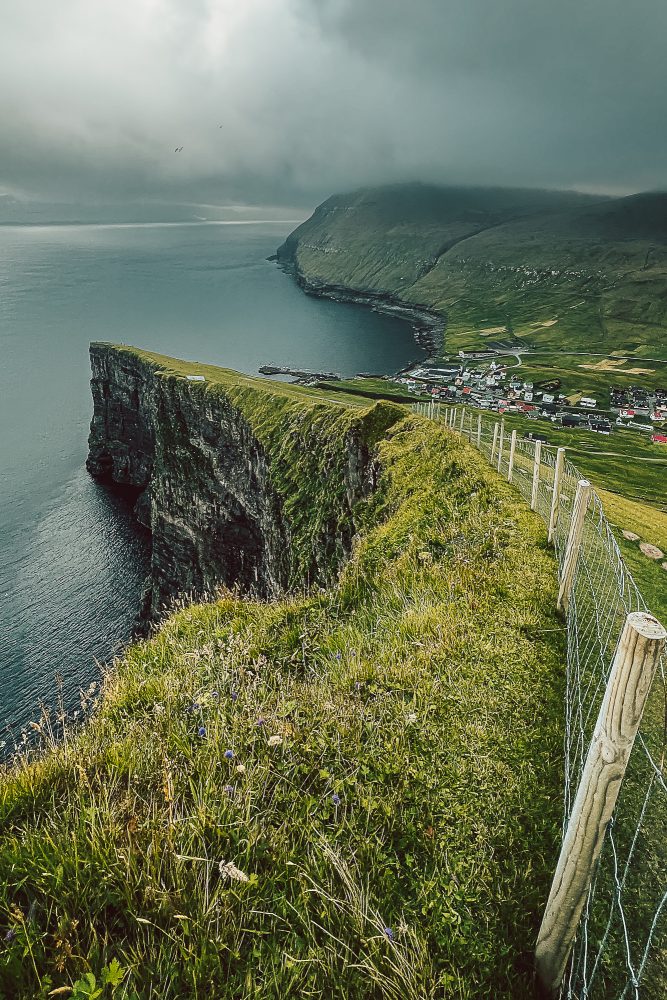

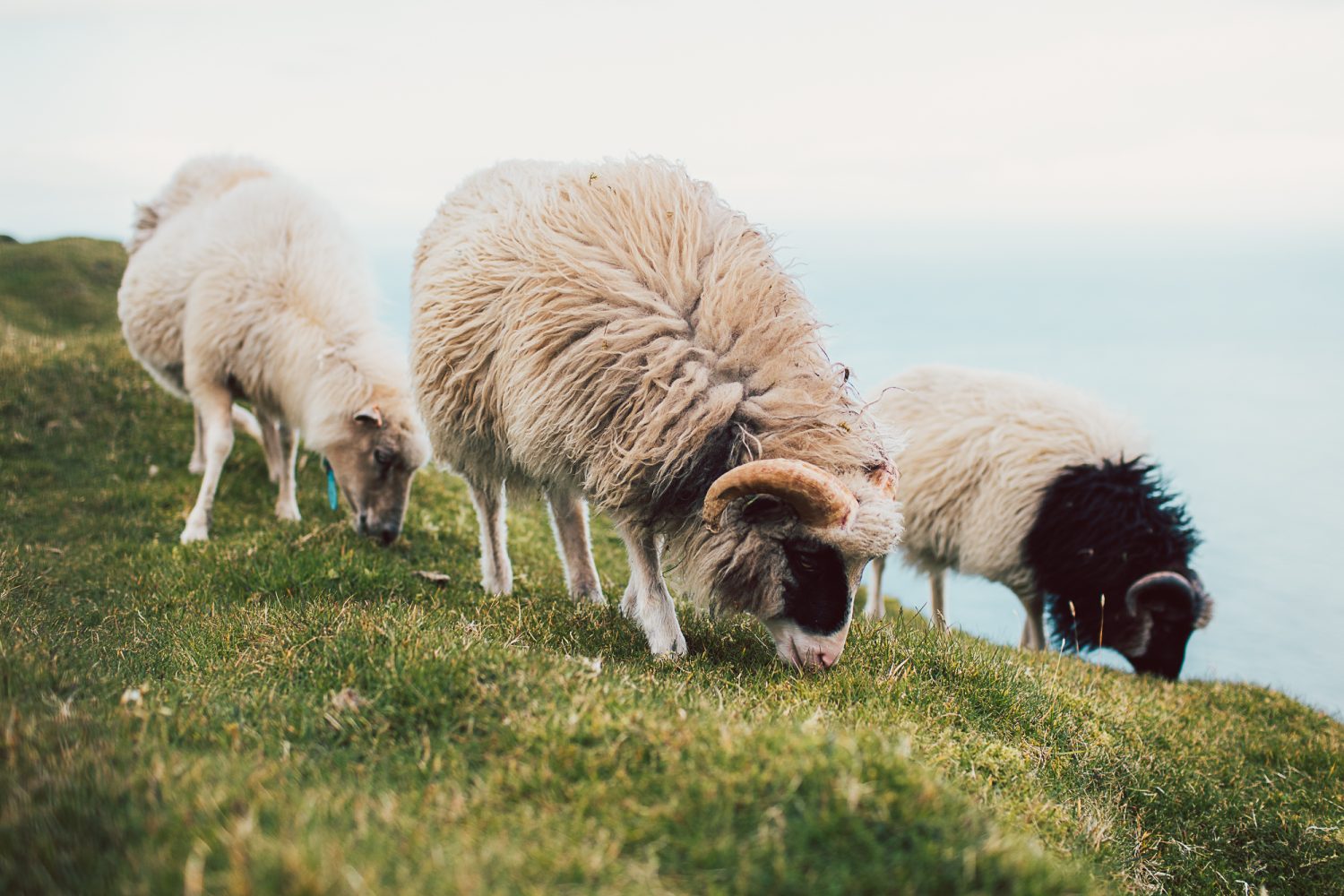
If you’re keen to mingle or dabble in the regional cuisine, head to the Gjáargardur Guesthouse. This spot features a hotel and hostel, where you’ll find plenty of motorcyclists spending the night and a generous restaurant menu serving Arctic char, Faroese lamb, and langoustines. The guesthouse’s website lists more walks and adventures for those who stick around.
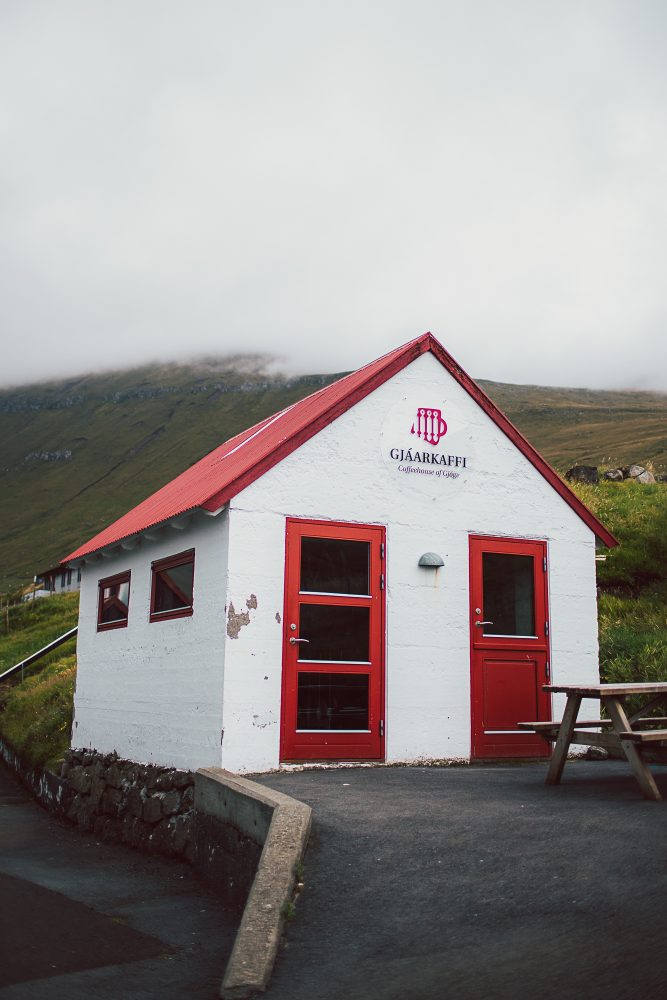
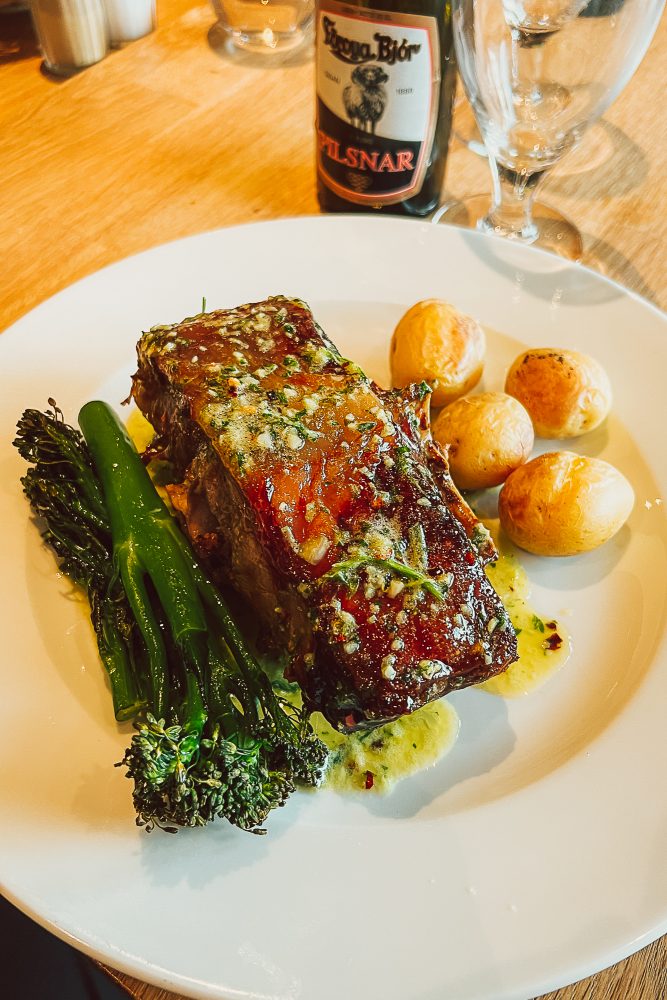
Gjógv is a perfectly acceptable stepping-off point for those itching for more excitement. Although it is located on the opposite side of the island, the capital city of Torshavn is less than an hour’s drive away; plus, Fóssa, the tallest waterfall in the Faroe Islands, is a mere 35-minute drive.

Read more: Destinations: The Faroe Islands by Lisa Morris
Our No Compromise Clause: We carefully screen all contributors to make sure they are independent and impartial. We never have and never will accept advertorial, and we do not allow advertising to influence our product or destination reviews.


